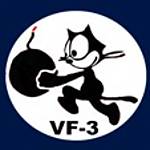My first impressions were very good. The moulding is nice, the rivets arent too pronounced and the canopy is also nice and clear. The kit has some shape issues, the most obvious ones are the incorrect intakes. I didnt care too much about them - this was to be a quick and painless built after all. That was the plan. Starting with the cockpit, there are no issues. Moving on to the fuselage, I removed much of the engine, which is realy basic looking and would need more care if it was to be shown outside of the fuselage. I disregarded the instructions and glued the rear parts of the fuselage to the forward parts before joining the fuselage halves. It was then easier to cover up the seam on the spine of the fuselage. I had to put a lot of lead into the nose of the plane and even then is the plane not realy well balanced and rear-heavy. I guess its due to the fuel tanks on the wing tips. I also had to cover up parts of the air intakes, which are preatty shalow. The fit of the fuselage was so-so, the fit of the wheel bays is very nice, which made a very good impression on me, but then the reality struck and reminded me that this is not a Tamigawa kit. The upper and lover wings and the fuselage didnt fit together at all. This was fixed by a lot of sanding, fitting, pieces of plastic and more sanding. The extensive and time-consuming fix has ruined a good part of pannell lines and rivets which I had to replicate. Then came the flaps, which didnt fit aswell and in the end the tailwings, which had much thicker profile and had also to be sanded down - loosing again the panel lines and rivets. The last straw was a clear part inserted into the nose of the plane - I literally cut of parts of it with a knive to make it flush with the nose. With so many fixes I had to put on multiple coats of surfaces and sand down the surface of the plane multiple times to get a good surface for the Light Aluminium Alclad. Alclad colours are perfect. Too perfect. I wanted to portrait a frontline fighter from Korea, not a State side PR presentation plane. The surface was soo shiny I had to put on a few coats of flat coat to tone it down a bit. Then came the fading - I used Valejo colours applied by brush to differentiate the individual panels. All the panel lines were highlighted with MIG Dark Wash. The last step was yellow dirt.
Korea field airfields were preaty basic. Runways were made of dirt and the F-80s were operated in very dusty and dirty enviroment. For this I used Valejo colours and sand pigments mixed with pigment fixer and applied by brush.
Decals in the kit are not good at all. The colours are not correct and the individual nose-art is not correctly portrayed either. In the end I used only some minor decals from the kit and used my own stash decals for the major part. The portrayed plane is FT-800 of the "Screaming Eagles" of the 7th Fighter-Bomber Squadron. Ispiration for this came from a colour picture I found in Osprey Frontline Colours No5 book. As far as I know there are no decal sheets for this particular plane so I combined the marking from my stash.
How to sum up the kit ? There is a lot of work involved if You wish to get a nice Shooting Star out of this kit. I certainly didn care that much and build it out of the box and even then it was a challenge. If You absolutely have to have a F-80C in the collection, go for it, if not, pick up something nicer, like the 1/48 F-84 from Tamiya.






















